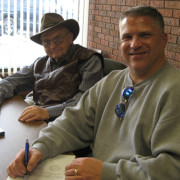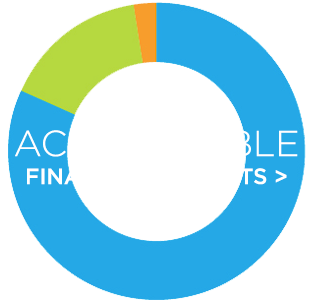South Fork Property Preserved for Future Generations
Property along the South Fork of the Snake River owned by Jack E. Koon and Jack Lee Koon will be permanently protected after transfer of a conservation easement to the Bureau of Land Management. The Teton Regional Land Trust (TRLT) purchased the easement from the Koons. The land itself remains in the ownership of the Koon family.
“Dad could have sold this property for a lot of money,” Jack Lee said, “but it was more important to him that the lands stay in the family. Selling the conservation easement rewarded him for the way he’s taken care of it, helps with his retirement, and we keep the land.”
BLM Idaho Falls District Manager Joe Kraayenbrink thanked the Koon family for their decision to conserve their land. “Everybody benefits,” he said, “including future generations of Idahoans who enjoy spending time on the South Fork. Thanks to the Koon family, the views from the river will be as scenic in 50 years as they are now.”
Jack E. Koon’s father, Frank L. Koon, homesteaded this property in 1906, building a sod house for his growing family and granaries for his growing crops. Today, three generations of the family live on the property.
Over the years, father and son have resisted offers to sell off lots.
Instead, they kept the land intact, creating a haven for the deer, great blue heron, trumpeter swans, ducks and geese that share the cottonwood bottomland with grazing cattle.
Jack Lee also sold a conservation easement on his property, which adjoins the land owned by his father. In all, these transactions permanently protect over 191 acres of cottonwood forest, pasture, grain fields and wetlands.
“We’re fortunate to work with families like the Koons,” said Chet Work, Executive Director of the Teton Regional Land Trust. “Their vision for the future of this property as a place that will be used for agriculture and for important wildlife habitat matches the Trust’s hopes for this landscape.”
The South Fork is one of the West’s most scenic rivers and one of Idaho’s most unique and diverse landscapes. It forms the southern boundary of the Koons’ property. Bannock Jim Slough meanders along the northern edge, and the Henry’s Fork is just a stone’s throw away.
For people who enjoy floating or fishing the South Fork, the easement ensures that views from the river will remain unspoiled. Protecting the cottonwood forest helps keep the waters cool for Yellowstone cutthroat trout and provides breeding and nesting habitat for over 120 species of birds. Using a conservation easement leaves the land in private ownership and on local property tax rolls.
The Land and Water Conservation Fund (LWCF) funded the purchase of this conservation easement. First authorized in 1970, the LWCF targets specific BLM purchases of lands or interests in lands that lie in special recreation management areas, areas of critical environmental concern, or units of the National Landscape Conservation System for the purposes of open space and recreation.
For nearly 20 years, the BLM, partners like the TRLT, and willing landowners have worked together to permanently protect over 18,000 acres along the South Fork and the lower Henry’s Fork. The South Fork supports the largest native Yellowstone cutthroat trout fishery outside of Yellowstone National Park and produces half of the bald eagles in Idaho.
Eastern Idaho also benefits from the economic impact of fishing and boating along these two waterways. Each year, more than 300,000 boaters, anglers and other visitors generate an estimated $41 million in income for the area and support some 1,200 jobs in local communities.
The BLM manages more land – more than 245 million acres – than any other Federal agency. This land, known as the National System of Public Lands, is primarily located in 12 Western states, including Alaska. The Bureau, with a budget of about $1 billion, also administers 700 million acres of sub-surface mineral estate throughout the nation. The BLM’s multiple-use mission is to sustain the health and productivity of the public lands for the use and enjoyment of present and future generations. The Bureau accomplishes this by managing such activities as outdoor recreation, livestock grazing, mineral development, and energy production, and by conserving natural, historical, cultural, and other resources on public lands.



